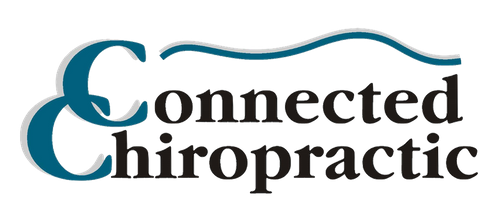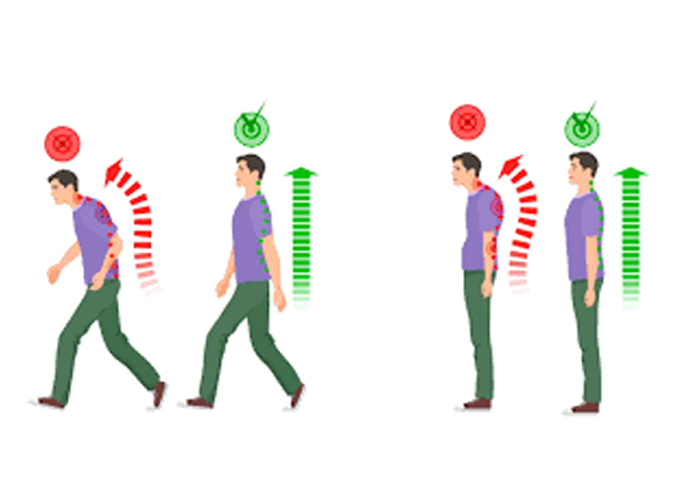
The term ‘posture’ refers to the body’s ability to be in alignment and balance itself properly to the force of gravity. Whether we are standing, sitting, or lying down, gravity exerts a force on our joints, ligaments, and muscles. Good posture means that our body has the ability to distribute the force of gravity equally throughout our body so that no single structure is over-stressed.
Good posture is also known as the neutral spine. Again, when we have good posture, the muscle, joints, and ligaments surrounding the spine are balanced and supporting the body in a way that allows for the best communication within our nervous system and for us to live life to the fullest.
Promoting A Healthy Spine
Better posture is a very important and affordable way to keep the back and spine healthy, which will lead to a healthier nervous system as well. Back support is especially important for people who spend many hours sitting in an office chair or standing on hard cement floors daily.
By not maintaining good posture and adequate back support, the stress of poor posture can change the anatomical characteristics of the spine over time (such as incorrect curvatures, restricted blood vessels, pinched nerves, and herniated disks).When the spine no longer sits where it was meant to, it causes miscommunication between your brain and body, and you cannot function at your best.
Sitting and standing with proper postural alignment will allow the body to work more efficiently with less fatigue and strain on ligaments and muscles. Being aware of your posture is the first step to breaking old habits and reducing stress and strain on your spine. The second step is releasing the tight, over-active structures and strengthening the weak ones.
Key Benefits To Good Posture:
1. Reduced low back pain – As mentioned above, sitting or standing in a slouched position for long periods of time stresses your lower back. More specifically, it puts pressure on the posterior structures of the spine, including the intervertebral discs, facet points, ligaments, nerves, and muscles by flexing the wrong area and relaxing other areas that should be working harder to evenly distribute gravity within our body.
One way to strengthen your lower back is through different exercises. This can include bridges – they can strengthen and engage your gluteal and abdominal muscles so that your body relies on those muscles instead of the lower back. By stretching your chest and strengthening your core and upper back muscles, you will see a gradual, but noticeable reduction in pain. It is also very important to move around frequently, no one can sit with perfect posture for long periods of time.
2. Fewer headaches – Having poor posture can attribute to tension headaches and increased tension in the back of your neck. Many times, when we correct posture, we can also reduce the muscle tension and decrease the frequency of headaches.
Stretch your neck muscles with a head retraction exercise! You lie on your back on the floor with your knees bent and your feet flat on the floor. Pull your chin in toward your chest, like you are trying to make a double chin, and hold for 10 – 15 seconds.
3. Increased energy levels – When your bones and joints are in correct alignment, it allows the muscles to be used as they’re intended…meaning that they are not working on other things, like pulling out of place bones back into place. So, when muscles aren’t over working to do their normal job combined with extra tasks that occur from stressors, it then makes sense that you’ll have less fatigue and more energy.
Once again, there are things you can do at home to help! While lying down, try to twist your torso to activate your side abdominal muscles. Start by sitting on the floor with your knees bent, lift your feet off of the floor about 6 inches and tighten your core as you rotate your upper body and elbows from side to side.
4. Less tension and pain in your shoulders and neck – A forward head posture puts additional strain on the upper back and neck. For every 10degrees forward from its correct location, the head actually “feels” like 10 lbs. heavier to your body. This causes more pain in the shoulders and neck area due to extra strain. With proper alignment, the joints and ligaments are less stressed and less subject to chronic overuse.
Try neck stretches to help relieve pressure and correct tension by standing with a straight spine and neck. Slightly tuck your chin backward, hold for 3 seconds, and then bring your head back to original position.
5. Breathing Becomes Easier and Deeper – For many of us, breathing isn’t something we think about on a daily basis. However, for those suffering with chronic pulmonary conditions, breathing is something they constantly think about. Poor posture (such as rounded shoulders) can increase the effort required to breathe by reducing the amount of air that makes it into the lungs. This can be a serious struggle for people with these types of conditions. When we correct this postural imbalance, patients often report that breathing requires less effort than before.
6. Improves Circulation and Digestion – When it comes to the digestive system, proper posture allows the internal organs in the abdomen to assume their natural position without undue compression. Poor posture and increase compression on the internal organs can interfere with the normal flow and function of the gastrointestinal system. It can also cause tight muscles that can compress arteries and veins, therefore constricting normal blood flow and making your heart work harder. Poor posture puts your spine in a stressful mode that actually changes the biomechanics of the spine and can change the way that your body functions. So, decrease that compression and keep the blood really flowing by working on maintaining a good, strong, upright position.
7. Helps Your Muscles and Joints – As discussed above, we know now that good posture helps us to keep our bones and joints incorrect alignment and ensures our muscles are used correctly. What we didn’t discuss is that this decreases the abnormal wearing of joint surfaces that could result in degenerative changes and joint pain. It also reduces stress on the ligaments, minimizing the likelihood of injury. Good posture allows our muscles to work more efficiently, allows the body to use less energy, and therefore, prevents muscle fatigue. It also helps prevent muscle strain, overuse, and even back and muscular pain.
The good news is you can improve your posture with a few simple exercises. Balance-specific workouts address posture and balance problems with exercises that build strength where it counts and stretches that loosen tight muscles. Quick posture checks in the mirror before and during balance exercises can also help you get the most from your regular workout. Increasing your core strength and flexibility can help you improve your posture noticeably in just a few weeks.
Last, but certainly not least, chiropractic care and massage therapy are also extremely helpful in improving and correcting posture through proper alignment and the relaxation of those strained muscles. This mean they can help lead to all of these positive results as well. Here in Johnstown, Dr. Brad and his staff would love to start you on the path to better posture and therefore, better health! Schedule an appointment with us today!




